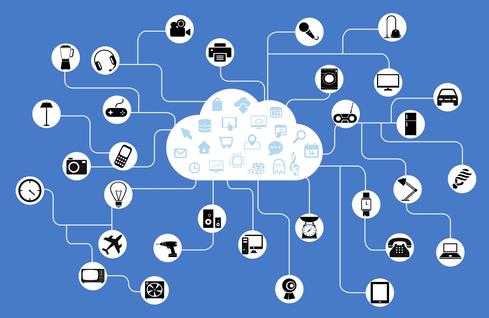Passive WiFi Could Advance IoTPassive WiFi Could Advance IoT
An ingenious new method to deliver connectivity at low power is ideal for the Internet of Things.
March 24, 2016

WiFi is a communication technology that enables the modern economy. It connects laptops, smartphones and devices to the network. It’s also a limiting factor that is holding back the creation of countless Internet of Things devices since every device does not have access to an ample power source. One potential solution is a research project from the University of Washington called Passive WiFi.
WiFi works by transmitting radio signals from routers and devices. Transmitting a radio signal usually requires 100 milliwatts of power. This amount of power is insignificant for the router connected to a wall outlet. However, the power requirement is extremely significant for mobile phones and IoT devices..
Instead of using power to generate radio signals, Passive WiFi works by reflecting radio signals at one of the transmission points. Reflecting a radio signal requires 100μW -- 10,000x lower power than 100mW. Imagine the amount of power that is required by a lighthouse to communication with a ship compared with using a mirror and sunlight to accomplish the task.
Experiments have shown that Passive WiFi can transmit 11 Mbps over a distance of up to 30 meters using the 802.11b standard.
Phone users tend to prefer 802.11a/g as it enables speeds of 54 Mbps, albeit actual throughput is closer to 22 Mbps. Passive WiFi could find its way into consumer devices such as smartphones for power efficiency. On the other hand, the backlight requires 400mW of power and GSM, CPU, LCD and RAM each require 100mW; consequently, the power efficiency gains would be relative.
However, low-power, short-range and high data rate IoT devices that are inaccessible to recharge for years are ideal for Passive WiFi. An example would be camera sensors that transmit at higher than VGA resolution.

IoT-jeferrb-pixabay
Currently, the Zigbee protocol is widely implemented to meet the requirements of these kinds of devices. Zigbee can transmit 250 Kbps over a distance of up to 100 meters (extendable through mesh networking) and consumes between 1-100mW of power, depending on configuration.
Zigbee has a mature supply chain and enables many of the benefits that Passive WiFi provides. However, high data-rate devices will favor Passive WiFi to accomplish the task at hand.
Another benefit of Passive WiFi is security. A device can only communicate with the router/network when the router is broadcasting and seeking a device. This adds an extra layer of protection to the authorization and authentication process; devices can’t contact the network, making man-in-the-middle attacks difficult.
One more benefit has to do with the tremendous frequency congestion on the 2.4 GHz and 5 GHz spectra. The sub-1GHz spectra are relatively less congested but the environment is fast changing. Recycling radio waves using Passive WiFi will not decrease the amount of congestion. Nevertheless, it will limit further congestion and can be viewed as future proofing.
Low-power WiFi technology is exciting; causal nexus makes the technology brilliant. For example, the same radio signals can be utilized to harvest low levels of energy to power other components of a battery-less device.
It’s not surprising that MIT has named Passive WiFi as one of the top 10 technologies of 2016.

interop-las-vegas-small-logo.jpg
To learn more about IoT and its impact on IT, attend the Internet of Things Summit at Interop Las Vegas this spring. Don't miss out! Register now for Interop, May 2-6, and receive $200 off.
About the Author
You May Also Like




